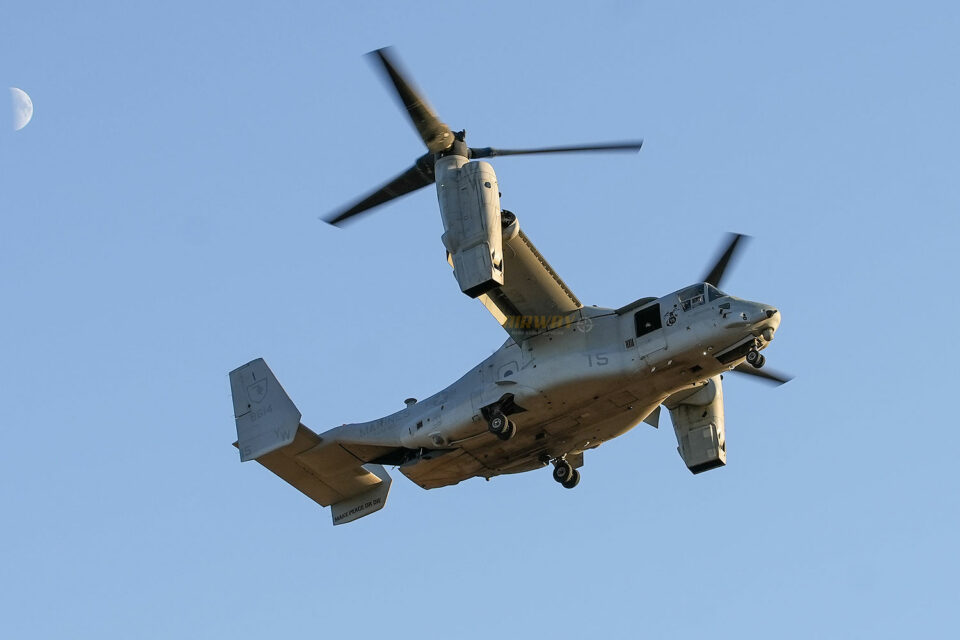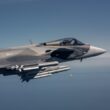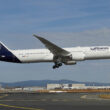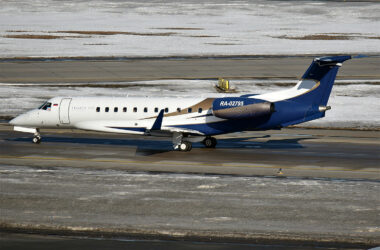The United States armed forces announced the resumption of the flights with the Bell-Boeing V-22 Osprey tiltrotor even without having a definitive report on the causes of the accident that killed eight soldiers in Japan on November 29.
Three months ago, the Air Force, Navy and Marines announced the grounding of the aircraft while the causes of the accident with a CV-22 were investigated.
Since then, the more than 400 Ospreys have been grounded, but a final report on the accident has not yet been completed.
Follow Air Data News: WhatsApp | Google News | Instagram | LinkedIn | Twitter | Facebook

Pentagon authorities, however, authorized the aircraft to return to service following a gradual resumption plan.
According to the Navy’s V-22 program manager, the failure involves an undisclosed component. The solution for now will be to carry out preventive reviews to add an extra security perimeter.
Dozens of accidents
Developed in the 1980s, the V-22 is the only tiltrotor aircraft in service in the world.
To offer performance similar to a helicopter and a turboprop aircraft, the Osprey uses two engines coupled to pivoting rotors at the tips of the wings. By turning them, the aircraft can go from hover mode to cruising flight.
The largest operator of the Osprey is the Marine Corps, with about 350 units. The Navy has a mix of 27 MV-22s and CV-22s while the Air Force operates 52 CV-22s.

Despite its unique characteristics, the Osprey has recorded 57 accidents since 1991 with the deaths of 62 people.
More than three decades after its appearance, the V-22 will no longer be the only operational tiltrotor in the world.
Leonardo is preparing to put the AW609 into service, the first civilian model in its category, while the US Army has selected the Bell V-280 Valor to replace the UH-60 Blackhawk helicopters within a few years.






